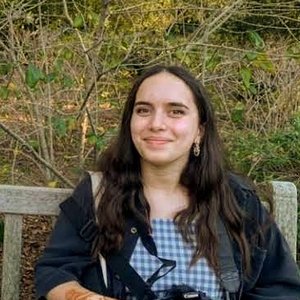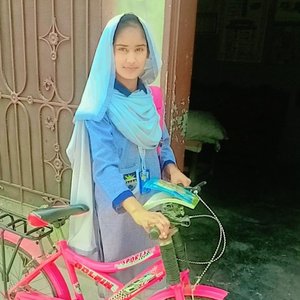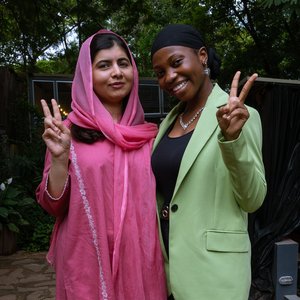How you can organize remotely
17-year-old American student Amelia Pinto explains how to safely organize community service projects in a pandemic. (Courtesy of Amelia Pinto)
17-year-old American student Amelia Pinto explains how to safely organize community service projects in a pandemic.
I’ve always been aware of the growing threat of the climate crisis. Living near the mountains in Southern California, I watched my neighbors and family evacuate because of frequent wildfires and conserve water during long droughts. The more I learned to adapt to these changes in my community, the more motivated I felt to share environmentalism lessons with a wider audience to call for action.
I was drawn to the organization Youth Climate Action Team (YCAT), which advocates for system change to comprehensively address many of the problems exacerbated by the climate crisis, such as environmental racism, housing crises and healthcare. In 2020, I helped start the Los Angeles YCAT hub, which soon transformed into Los Angeles Youth Climate Activism (LAYCA). LAYCA focuses on hyper-local, community-based organizing around climate justice.
“The more I learned to adapt to these changes in my community, the more motivated I felt to share environmentalism lessons with a wider audience to call for action,” Amelia shares. (Courtesy of Amelia Pinto)
Developing LAYCA at the height of the COVID-19 pandemic when young people were stuck at home and unable to take physical actions like protesting was discouraging. Being in isolation made us feel the weight of the climate crisis more heavily as we weren’t distracted with the business of our regular lifestyles.
However, we made the most of the tough circumstances. The LAYCA team took the chance to pause and reflect on our values, role and service in the community. We adapted to virtual organizing and began meeting online, making our meetings more accessible to young people from many different cities in the Los Angeles area. It was a powerful representation of our diverse city and the many different experiences that exist within the climate movement.
“When working with a coalition during the pandemic, it was really important to us to create a sense of community as most of us lacked that.”
The change to virtual organizing came with challenges. It was more difficult to mobilize people to show up and engage because we couldn’t hold each other accountable in person. Throughout this process, I learned to navigate some difficult circumstances with the disconnect, disassociation and isolation we were — and still are — experiencing.
Whether you’re an aspiring organizer that doesn’t know where to start or an advocate dealing with burnout from the past few years, here are some tips you can use to engage your community and advocate for social justice while being apart.
Offer online classes and webinars.
Online classes and webinars are useful tools to help your organization connect with more people and make your information more accessible to a wider audience. In LAYCA, we put together a few webinars held on social media platforms and Zoom. We got the word out through social media, graphics and shareable-posts. Afterwards, we offered participants resources on how to host roundtable discussions or identify bright-spots in policy to use in their communities. It was important to us to make classes interactive, applicable and give spaces for people to share their stories and thoughts.
Find creative ways to bond virtually.
When working with a coalition during the pandemic, it was really important to us to create a sense of community as most of us lacked that. Our team bonded by meeting virtually for game nights, hosting movie watch parties and mailing each other seed kits to easily grow native wildflowers. We also used Zoom and Google Meet to not only communicate online, but also learn more about each other. We also considered meeting in public parks and outdoor spaces to interact in person while still adhering to COVID guidelines. Bringing a picnic blanket and simple activities can create the same feeling of community and togetherness. To strengthen a sense of solidarity, taking regular meeting times to have fun and learn about ourselves and each other is so meaningful.
“In LAYCA, we put together a few webinars held on social media platforms and Zoom,” Amelia shares. (Courtesy of Amelia Pinto)
Foster regular communication.
When organizing, good, thoughtful communication is so important. It improves organizing efforts and amplifies opportunities. At LAYCA, we use several platforms — including Discord, Slack, email and text — to communicate with one another. For our conversations with the LA community, we use Instagram, TikTok and Medium. With these media platforms, we can share toolkits, petitions, event information and graphics to mobilize our audience.
While it’s great to be able to communicate through so many different platforms, it’s important to set guidelines for your interactions. You don’t have to always be in contact or lower the boundaries between your work and life. Allow yourself to disconnect by limiting your time spent on social media, meditating, journaling or going on walks in your community.
“When organizing, good, thoughtful communication is so important. It improves organizing efforts and amplifies opportunities.”
Prioritize mental health.
Throughout the pandemic, we have all experienced a spectrum of difficulties, emotions and isolation. In light of a sudden global pandemic and the contagious spread of COVID-19, we had to prioritize our mental health while organizing. Climate justice work can be overwhelming to navigate. Young people are constantly readjusting their boundaries to balance the time spent online in virtual meetings and the loneliness and anxiety that comes with not seeing our communities face to face. I found there were often periods of time I would need to step back from LAYCA to focus on school work, spending time with loved ones or feeling grounded in nature. I’d also send mental health check-ins (reaching out personally to team members) periodically or whenever we learned of another heavy event in the world.
My team and I have learned that it’s crucial to take time for yourself and assess your physical, emotional and mental health when speaking out. Resting isn’t just acceptable — it’s necessary. If all you do one day is sign a petition, that’s great! Don’t measure your productivity by comparing yourself to other leaders who don’t have to worry about school, work or putting themselves in danger. There should be no shame when people who volunteer their (typically unpaid) time to a cause need rest.
“While it’s great to be able to communicate through so many different platforms, it’s important to set guidelines for your interactions.”
Create spaces for mutual aid
We learned from the pandemic how important it is to meet the immediate needs of your community. My friends at YCAT taught me how to create mutual aid opportunities to meet these needs directly and focus on solidarity over hierarchy. Mutual aid is a way of working together to meet the needs of your community without enabling White saviorism and charity. It connects people in a community to provide each other with whatever resources they may need, like food, clothes or cash. At LAYCA, we found that we could create opportunities for tutoring, grocery shopping, peer counseling, clothing drives and community fridges for our neighbors.
Mutual aid spaces don’t have to always take place in-person — online counseling and tutoring are excellent ways for aid to be accessible. COVID-19 increased the rates of poverty, food insecurity, unemployment and education inequalities for so many people across the world. In the U.K., COVID mutual aid programs connected neighbors stuck in isolation to grocery shop for each other. In India, mutual aid organizations with a focus on the LGBTQ+ community sought out donations and help to distribute medical supplies. Indigenous communities in the U.S. connected people with resources and encouraged new mutual aid chains on tribal land. Regardless of where you live and what resources are available to you, there is always an opportunity to support each other in little ways.
“At LAYCA, we found that we could create opportunities for tutoring, grocery shopping, peer counseling, clothing drives and community fridges for our neighbors,” Amelia shares. (Courtesy of Amelia Pinto)
Collaborate virtually with your representatives.
Our philosophy at LAYCA is that systemic action through legislation and movements will be more effective than asking each person to change their lifestyle. Using available online resources to push lobby corporations to change their policies can get us closer to creating progress. Contacting representatives remotely allows young people to send messages in a way that is less intimidating and makes the political process more inclusive. To target a specific corporation or politician, we host phone-banking, text-banking or emailing lawmakers events. Last Earth Day, we sent out a script for contacting U.S. representatives.
The most important reminder for being an organizer at this time is that you can’t be perfect. The pandemic created so much uncertainty about the future, and the climate movement was not exempt. But from it, we learned how to make organizing and advocacy more accessible, equitable and inclusive. Create space in your community for change and be fearless on your course for justice — you never know what just might happen.
 Read more
Read more















